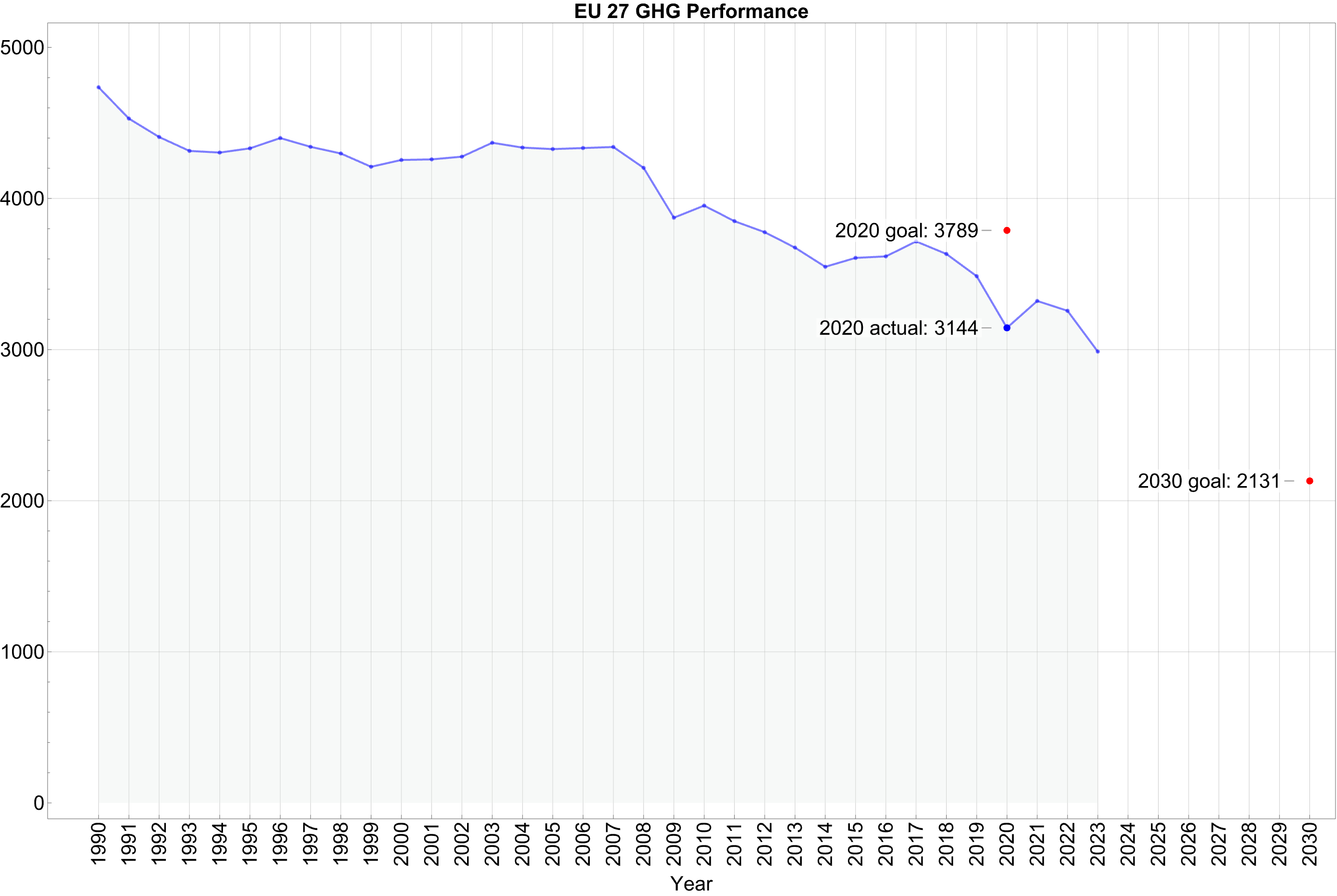EU greenhouse gas emissions continue to drop
The EU met its 2020 emissions goals at least 10 years early, and had remarkable success in its 2023 reductions.


That's pretty good: much better than Australia, the US, or Canada. The EU exceeded their 2020 goal by quite a bit, as you can see by comparing the 2020 "goal" and "actual" dots.
To the eye, the line looks as though Europe will have no trouble meeting their 2030 goal, but that's a bit of an illusion. It's caused by the steep downslope of the 2023 segment (that 8% mentioned in the opening paragraph). Just a little mathing suggests Europe is likely to come in just a bit high in 2030, so to be sure that they come in under the 2030 goal (2,131 megatonnes of CO2 equivalent), the European Environment Agency is tinkering a bit with their policies and measures to keep the slope steeply downwards.2
About Hope
If you look at the top of this web page, you'll notice "HOPE", a menu choice that takes you to a series of short articles about victories in the climate fight. This is one of those articles.
People don't have a lot of time. They are inundated with negative news about the environment. While these negative news stories can communicate the seriousness of the situation, they can also convince people to believe that things are hopeless ... and they are not. So each little, digestible bit provides a peek into one tiny little thing that has gone right.
Don't think for a minute, though, that any of these issues are simple. Usually, a whole world of physics, chemistry, policy, and actions undergirds each of these stories. We encourage you to look more deeply, to investigate the references at the end of each article, to take advantage of each little positive window into a bigger, more complex situation.
See below for some reading suggestions.
Reading
- “Trends and Projections in Europe 2024,” October 31, 2024. https://www.eea.europa.eu/en/analysis/publications/trends-and-projections-in-europe-2024.
- “Total Net Greenhouse Gas Emission Trends and Projections in Europe,” October 31, 2024. https://www.eea.europa.eu/en/analysis/indicators/total-greenhouse-gas-emission-trends.
